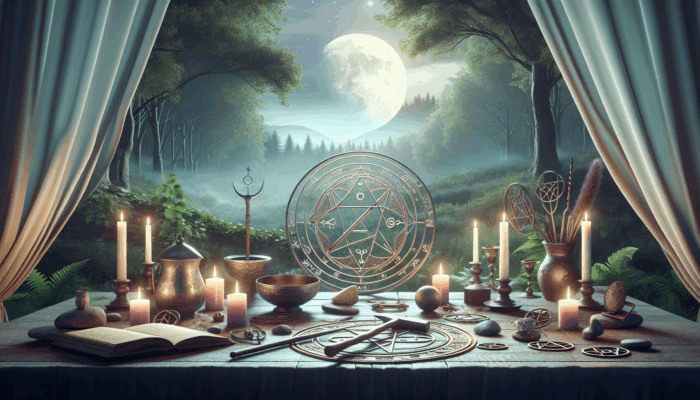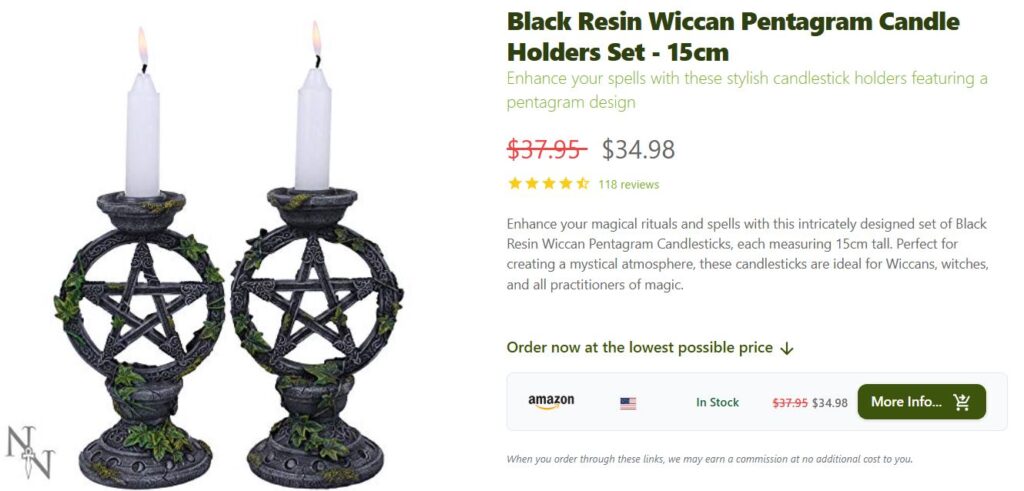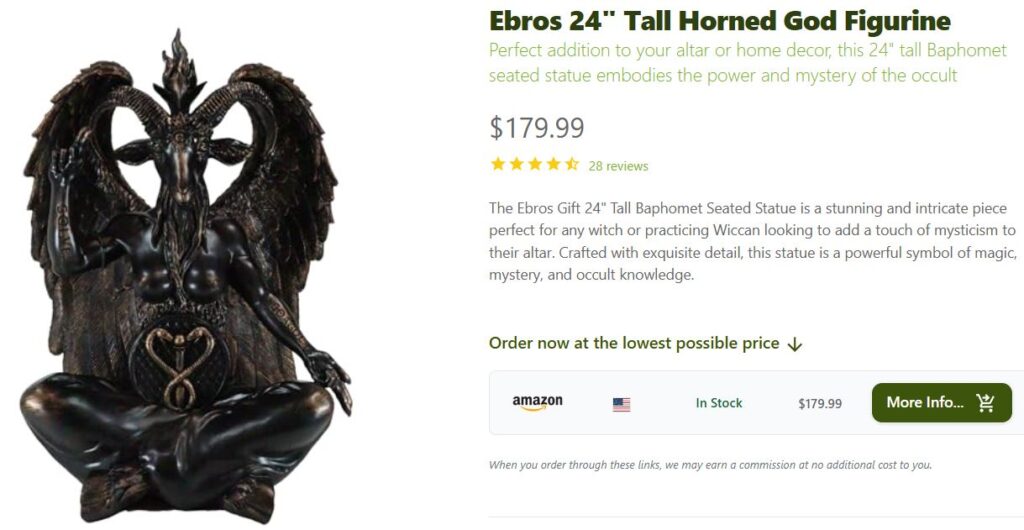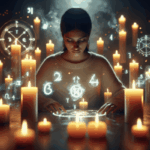Essential Altar Tools for Wiccan Practices
Understanding the Power of the Athame
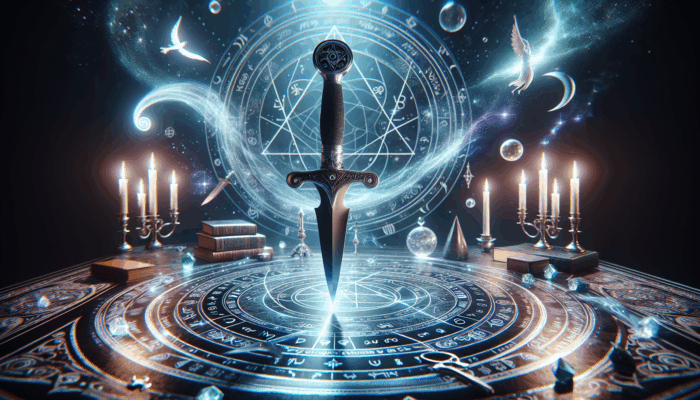
The athame is regarded as the quintessential tool within Wiccan altar decor, as a ritual knife integral to various Wiccan practices. Distinctively designed with a black handle, the athame transcends its role as a mere weapon; it is a dynamic instrument for channeling energy, establishing sacred circles, and summoning spirits. The double-edged blade of the athame embodies the equilibrium of opposing forces—light versus dark, masculine versus feminine, and the spiritual versus the physical realms, making it a vital tool for practitioners seeking balance and harmony in their rituals.
When utilized in rituals, the athame empowers practitioners to channel their intentions effectively. For example, during the sacred act of casting a circle, the athame delineates a protected space, creating an energetic barrier that safeguards the practitioner from external influences. Additionally, invoking deities or spirits often necessitates using the athame to direct energy towards the intended source, enhancing communication and connection with the divine.
Visually, the athame can serve as a captivating centerpiece within Wiccan altar decor. Many practitioners select beautifully crafted athames, showcasing intricate designs that resonate with their personal beliefs and energies. The choice of materials—be it silver, wood, or stone—adds another layer of symbolism, as practitioners often consider how these materials resonate with their spiritual journeys. Ultimately, the athame fulfills a functional role and reflects the individual's unique aesthetic and spiritual identity.
The Significance of the Chalice in Rituals
The chalice is another fundamental tool in the array of Wiccan altar decor. It symbolizes the element of water and embodies the essence of the feminine divine. This sacred cup is frequently utilized in rituals involving liquid offerings such as wine or water, representing nourishment and abundance in both physical and spiritual forms. The chalice embodies receptivity, intuition, and the nurturing aspects of the divine feminine, making it an essential element during ceremonies aimed at fostering deep connections with one's spiritual essence.
Within rituals, the chalice serves as a vessel for offerings, often blessed before being presented to deities or utilized in sacred ceremonies. This process invites practitioners to infuse their intentions into the liquid, transforming it into a potent medium for manifesting desires and aspirations. Sharing a drink from the chalice also symbolizes unity and connection among participants, reinforcing the sense of community and shared energy during spiritual gatherings.
Aesthetically, chalices can range widely, from simple rustic designs to elaborate ornate pieces embellished with symbols and gemstones. Many practitioners select chalices that resonate with their journey and beliefs, establishing them as a focal point on their altar. The strategic placement of the chalice often aligns with the direction associated with water in elemental arrangements, emphasizing its significance in Wiccan altar decor and reinforcing the connection to the nurturing qualities of the water element.
The Versatility and Power of the Wand
The wand is a multifaceted tool in the Wiccan toolkit, typically crafted from various wood types, each with its unique energies and associations. As a conduit for directing energy, the wand is vital for rituals and spellwork, serving a different purpose than the athame, which is more about cutting. Instead, the wand primarily focuses on channeling—invoking or banishing energies as the situation requires, making it an essential instrument in the practitioner's spiritual arsenal.
When employing the wand, practitioners concentrate on their intentions, visualizing energy flowing from the wand toward their desired outcomes. This can encompass many intentions, from healing and love to prosperity and protection. Each wand carries its distinct energy, influenced by the type of wood from which it is created; for instance, an oak wand may symbolize strength and stability, while a willow wand might represent flexibility and intuition.
In wiccan altar decor, wands can be beautifully designed with personal touches, such as crystals or symbolic carvings that resonate with the user. Displaying a wand on the altar fulfills a functional role and enhances the altar's aesthetic, embodying the practitioner's journey and intentions. Careful placement of the wand ensures that it aligns harmoniously with the elemental energies in the altar setup, contributing to a balanced and energetically vibrant space.
The Pentacle: A Symbol of Protection and Manifestation
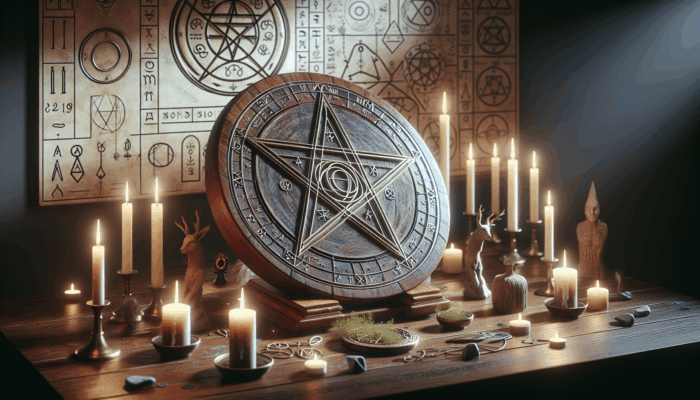
The pentacle is a potent symbol within Wiccan practices, serving both as a tool and as a decorative piece in Wiccan altar decor. This disc, often marked with a pentagram, represents protection and functions as a tool for manifestation and grounding during rituals. The pentacle embodies the four classical elements—earth, air, fire, and water—alongside spirit, creating a harmonious balance that is fundamental to Wiccan spirituality and practice.
During rituals, the pentacle can act as a focal point for intentions, aiding practitioners in grounding their energy and manifesting their desires. It is a protective barrier during ceremonies, shielding the sacred space from unwanted energies or influences. Practitioners frequently place crystals or offerings upon the pentacle to enhance the connection between the physical and spiritual realms, reinforcing its vital role in their spiritual practices.
Pentacles can be crafted from various materials, including wood, metal, or stone. Their designs can be intricate or simple, often adorned with additional symbols or gemstones that amplify their energetic properties. The placement of the pentacle on the altar is of great significance; it is commonly situated at the center or northeast of the altar, symbolizing its essential role as a cornerstone of balance and protection in Wiccan altar decor.
Representing the Elements on Your Altar
Embracing the Earth Element
The earth element, a cornerstone of Wiccan practices, is often represented on the altar by including stones, crystals, or salt. This element embodies stability, grounding, and the physical aspects of existence, making it crucial for rituals to forge deep connections with the material world. By incorporating representations of the earth into Wiccan altar decor, practitioners enhance the visual appeal and amplify the spiritual energy of their altar space.
Crystals hold unique properties that resonate with different energies, making them powerful allies in spiritual work. For instance, amethyst promotes tranquility and balance, while quartz serves to amplify intentions. Practitioners can also include natural stones, like river rocks or geodes, each telling a story that connects them to the earth's wisdom and energy. Selecting these elements fosters a personal connection to the earth's gifts.
Establishing a connection with the earth element can be as simple as placing a small potted plant or a bowl of soil on the altar. This symbolizes the earth's nurturing quality, reminding practitioners of the significance of growth, renewal, and nature's cycles. During rituals, grounding stones can be employed to anchor energy, providing stability and support during spiritual work.
The arrangement of earth representations within Wiccan altar decor is crucial; typically positioned in the northern section of the altar, these items help balance the energies of other elements, creating a harmonious and adequate space for rituals and intentions.
Connecting with the Element of Air
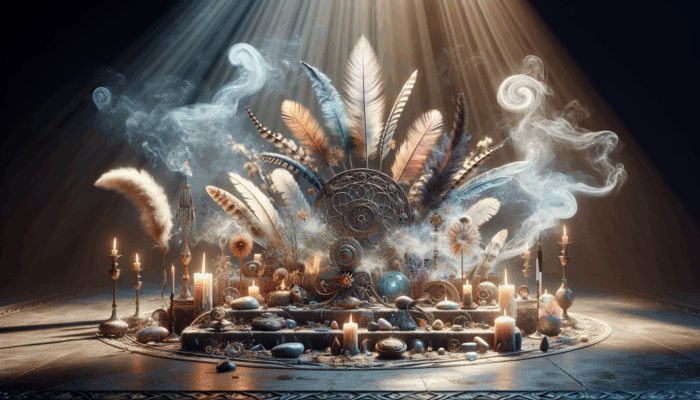
Air represents another essential element in Wiccan practices, often depicted through incense or feathers on the altar. This element signifies communication, intellect, and the breath of life, playing a vital role in invocation or divination rituals. Integrating representations of air into wiccan altar decor enhances the altar's energetic quality and invites clarity and inspiration into the practitioner's spiritual work.
Incense is a favored choice for embodying air, as its fragrant smoke carries intentions skyward. Different scents correspond to various energies—lavender for tranquility, sandalwood for grounding, or frankincense for spiritual connection. Lighting incense during rituals invokes the element of air, creating a bridge between the physical and spiritual realms, enabling practitioners to access higher states of consciousness.
Feathers, often collected with intention, symbolize freedom of thought and the ethereal qualities of air. Displaying feathers on the altar reminds practitioners to remain open to new ideas and perspectives, encouraging exploration and growth in their spiritual journey.
The placement of air representations is also significant; they are commonly arranged in the eastern part of Wiccan altar decor, symbolizing the dawn of new ideas and possibilities. This thoughtful arrangement enhances the altar's aesthetic and aligns with the natural flow of energies, inviting fresh inspiration and clarity into the practitioner's practice.
Harnessing the Transformative Power of Fire
Fire, the element of transformation and energy, is represented in Wiccan practices through candles or charcoal on the altar. This element embodies passion, creativity, and the purifying qualities of flames, making it essential for rituals aimed at change and manifestation. Integrating representations of fire into Wiccan altar decor brings warmth and illumination to the spiritual space, enhancing the overall energetic vibration of the altar.
Candles are the most common representation of fire, symbolizing light amid darkness. Each candle's color carries specific meanings—red for love and passion, green for growth and abundance, or black for protection and banishment. Lighting a candle during rituals invokes the transformative energy of fire, helping practitioners focus their intentions and visualize their desires coming to fruition.
Charcoal, used for burning herbs or incense, is another method of incorporating the fire element. It allows for the release of fragrant smoke, enriching the sensory experience of rituals. Burning herbs can symbolize both the release of negativity and the invitation of new energies into the practitioner's life, making it a powerful tool in Wiccan altar decor.
Fire representations are typically positioned in the southern part of the altar, symbolizing warmth, energy, and transformation. This intentional placement aids in balancing the altar's energies, ensuring that the practitioner can effectively harness the transformative power of fire in their spiritual work.
Welcoming the Element of Water
Water symbolizes emotions, intuition, and healing. It is often represented in Wiccan practices through bowls or chalices on the altar. Incorporating water representations into Wiccan altar decor invites fluidity and adaptability into the practitioner's spiritual space, fostering a deeper connection with their emotional self and the divine essence.
Bowls of water serve multiple purposes, from practical ritual use to symbolic representations of the emotional realm. Practitioners may use water for cleansing or blessings, infusing their intentions into the liquid. Dipping hands or tools into the water during rituals symbolizes purification and the release of negativity, paving the way for positive energies and new beginnings.
As previously mentioned, chalices also represent water, emphasizing the nurturing aspect of spirituality. In rituals involving offerings, practitioners may pour water or wine into the chalice as a gesture of gratitude and connection with the divine. This act enhances the ritual's significance while embodying the emotional depth associated with the water element.
Regarding placement, water representations are typically situated in the western part of the Wiccan altar decor, symbolizing the setting sun and water's reflective qualities. This arrangement enhances the altar's beauty and aligns with the natural flow of energies, inviting emotional clarity and intuition into the practitioner's spiritual practice.
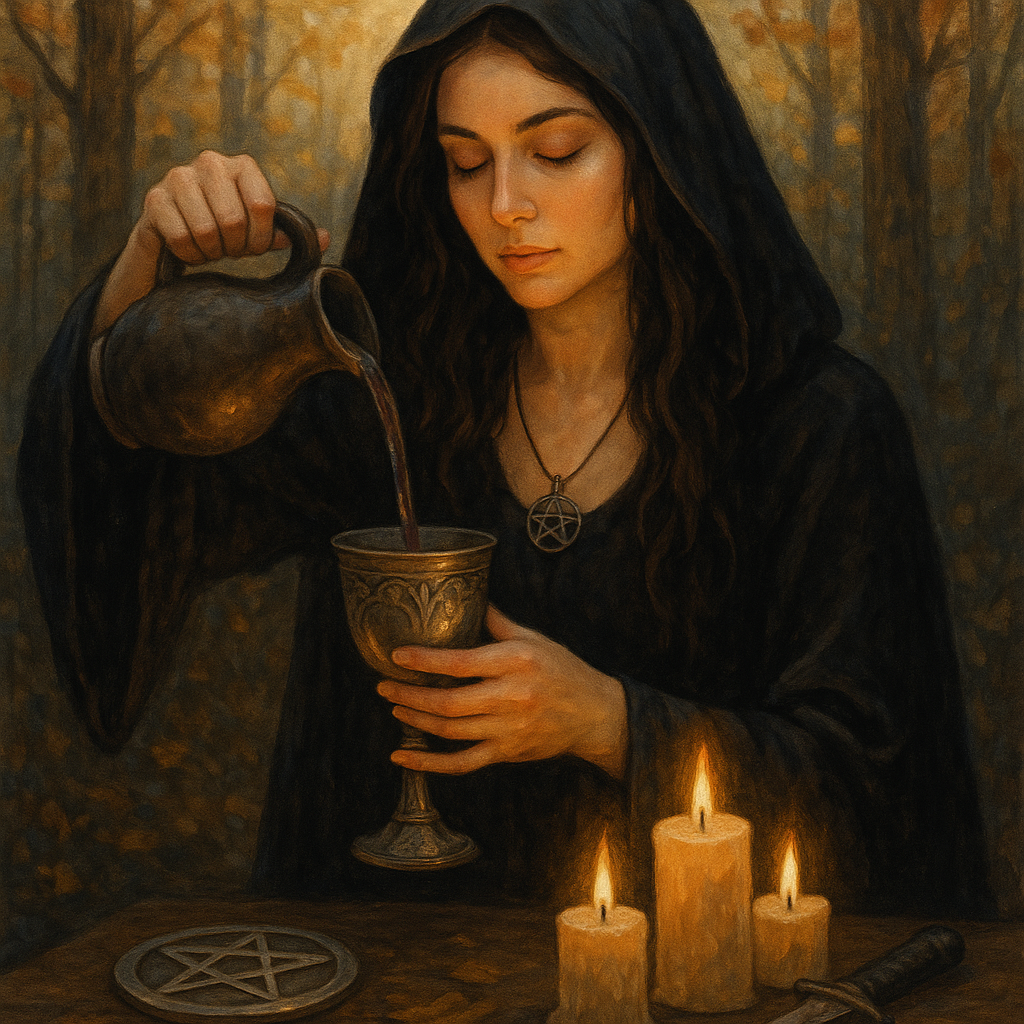
Connecting with the Element of Spirit
Spirit is the unifying element that bridges the material and spiritual realms, often represented through the athame or wand in Wiccan practices. This element embodies the essence of divinity and inner wisdom, playing a pivotal role in rituals aimed at connecting with higher consciousness. Incorporating representations of spirit into Wiccan altar decor enhances the practitioner's connection with their higher self and the divine.
The athame, a tool for directing energy, powerfully symbolizes spirit. It represents the practitioner's will and intent, bridging the physical and spiritual realms during rituals. Practitioners can invoke divine energies by wielding the athame, channeling their intentions toward specific outcomes. The energy directed through the athame transcends the boundaries of the material world, forging a deeper connection with the practitioner's spiritual essence.
Similarly, the wand extends the practitioner’s energy, creating a conduit for divine communication. When invoking spirits or deities, the wand directs energy and intentions, making it an indispensable tool in the practitioner's spiritual toolkit. Each wand resonates with different energies, deepening the practitioner's connection with the spirit world.
Within Wiccan altar decor, representations of spirit are typically positioned at the center or top of the altar, symbolizing their paramount importance in the overall energy dynamic. This positioning invites clarity, connection, and spiritual growth, enhancing the practitioner's ability to access higher realms of consciousness during rituals.
Seasonal Decorations to Enrich Your Altar
Embracing the Energies of Spring
Spring represents a time of renewal and growth, making it an ideal opportunity to refresh your Wiccan altar decor. As the earth awakens from winter slumber, practitioners often incorporate vibrant flowers and lush greenery into their altars to celebrate this lively season. Seasonal decorations mirror the energy of the time and strengthen the altar's connection to the natural world and its rhythms.
During festivals such as Ostara and Beltane, flowers like daffodils, tulips, and violets can symbolize new beginnings and the blossoming of life. These blooms' radiant colors and delightful fragrances invite a sense of joy and vitality into the spiritual space. Practitioners may create floral arrangements on their altars, utilizing them as offerings or as a means to honor the season's beauty.
Additionally, incorporating fresh greens—such as herbs or small potted plants—can represent the earth's fertility. Utilizing plants with magical properties, like rosemary for protection or lavender for peace, can deepen the connection to this season of growth and renewal. Caring for these plants fosters a nurturing relationship between the practitioner and the earth, reinforcing the theme of rejuvenation that spring embodies.
The strategic placement of seasonal decorations is significant. By arranging these elements in the eastern section of the altar, practitioners can symbolize the dawn of new ideas and the potential for growth during this magical time. This approach enhances the altar's aesthetic and aligns it with the energies of spring, inviting abundance and renewal into the practitioner's life.
Celebrating the Vibrancy of Summer
Summer is celebrated for its vibrant energy and warmth, making it the perfect time to infuse wiccan altar decor with bright colors and symbols of the sun. Festivals like Litha honor the peak of the sun's power, celebrating abundance, growth, and the vitality of life. Incorporating elements that reflect this season elevates the altar's energy and allows practitioners to connect more deeply with the life force surrounding them.
During this season, cheerful blooms like sunflowers and marigolds can serve as joyful representations of the sun's radiance. With their bold hues, these flowers can be arranged on the altar to create a stunning visual that embodies the abundance of life during summer. Practicing gratitude for the season's gifts can further strengthen the practitioner's connection to the earth and its cyclical nature.
Candles in warm colors—such as gold, yellow, or orange—can also be added to represent the sun's energy. These candles illuminate the altar and foster a warm, inviting atmosphere. Lighting these candles during rituals elevates the energy, empowering practitioners to harness the transformative power of summer and manifest their intentions.
Additionally, symbols of the sun, such as solar motifs or images of sun deities, can heighten the altar's connection to this vibrant season. The southern section of the altar is often designated for these elements, mirroring the sun’s path across the sky. This intentional arrangement nurtures a sense of vitality and celebration, inviting practitioners to embrace the energy of summer and all its possibilities.
Reflecting on Autumn's Bounty
Autumn ushers in a season of thanksgiving and reflection, offering a rich opportunity to explore a Wiccan altar decor adorned with symbols of harvest and gratitude. Celebrated during festivals like Mabon, this season is characterized by an abundance of fruits, colorful leaves, and earthy tones reflecting the earth’s generosity and life cycle. By incorporating these elements, practitioners can deepen their connection to the earth's natural rhythms.
Leaves in warm hues—reds, oranges, and yellows—can be gathered and arranged on the altar to symbolize the changing seasons and the beauty of letting go. This practice reminds practitioners of life's impermanence and encourages them to reflect on their blessings while also releasing what no longer serves them.
Pumpkins, gourds, and other harvest fruits can be added to the altar to represent sustenance and abundance. These symbols enhance the visual appeal and serve as offerings during rituals, honoring the earth’s generosity. Sharing these harvest items with family or community can foster a sense of connection and gratitude, reinforcing the communal aspect of the season.
Placing these seasonal decorations in the northern part of the altar signifies stability and grounding, aligning with the energies of autumn. This arrangement encourages practitioners to reflect on their spiritual journeys, acknowledge their growth, and express gratitude for the blessings in their lives. By creating a space that embodies the essence of autumn, practitioners can deepen their spiritual practice and connection to the earth.
Embracing the Stillness of Winter
Winter signifies a time of introspection and rest, making it vital to adapt wiccan altar decor to capture the essence of this season. Celebrated during Yule, winter embodies endurance and hope, inviting practitioners to reflect on the cycles of life and the promise of renewal. Incorporating elements like evergreens, snowflakes, and lights enhances the altar's energy and connects practitioners with the spiritual significance of winter.
Evergreens, such as pine or spruce, symbolize eternal life and resilience, reminding practitioners that life continues to thrive even in the coldest months. Decorating the altar with evergreen branches or wreaths creates a beautiful focal point that serves as a reminder of hope and continuity through the darker months, inspiring resilience in the face of challenges.
Snowflakes, whether represented through decorations or artwork, embody the beauty and uniqueness of winter. They symbolize transformation, reminding practitioners that there is potential for growth and change even in times of stillness. Incorporating these symbols into the altar fosters a sense of peace and acceptance during the quiet months, encouraging reflection and contemplation.
Lighting candles or placing lights on the altar evokes the warmth and brightness of the sun, inviting hope and positivity despite the cold outside. The northern section of the altar is often dedicated to winter representations, grounding the space in stability and resilience. This thoughtful arrangement encourages practitioners to embrace the stillness of winter, fostering a deeper connection with their inner selves and the cycles of nature.
Representations of Deities in Your Spiritual Practice
Honoring Goddess Figures in Rituals
Goddess figures are powerful representations of the feminine divine within Wiccan altar decor, acting as focal points for practitioners seeking to honor and connect with these sacred energies. Statues or images of goddesses embody various aspects of femininity, including nurturing, wisdom, fertility, and empowerment. Incorporating these figures into the altar creates a sacred space that encourages a profound connection with the divine feminine.
Each goddess possesses unique qualities and attributes, making it essential for practitioners to select representations that resonate with their spiritual journeys. For example, a statue of Diana may symbolize independence and the hunt, while a figure of Venus can represent love and beauty. By choosing a goddess that aligns with their intentions, practitioners deepen their connection and invoke the specific energies they seek to manifest in their lives.
Placing goddess figures on the altar reminds practitioners of the divine feminine and calls them to embody those qualities in their daily lives. Many practitioners create rituals or offerings to honor these deities, fostering a relationship built on respect and devotion. This practice can be as simple as lighting a candle or placing flowers as offerings, inviting the goddess's energy into their sacred space. Goddess figures can vary dramatically in design, material, and size, visually contributing to the overall beauty of Wiccan altar decor. When strategically positioned, these representations enhance the altar’s energy, creating a focal point that invites connection and reverence for the divine feminine, enriching the spiritual atmosphere of the altar.
Invoking the Presence of God Figures
In addition to goddess figures, representations of the masculine divine play an equally vital role in Wiccan practices. Symbols or statues of god figures can be incorporated into a Wiccan altar decor to honor and invoke god energies, balancing the sacred masculine and feminine within the practitioner's spiritual practice.
Each god figure carries specific attributes and qualities that reflect various aspects of masculinity, such as strength, courage, wisdom, and protection. For instance, a statue of Thor may symbolize strength and security, while a representation of Hermes could embody communication and travel. Practitioners often select god figures that resonate with their beliefs or the qualities they wish to cultivate.
Invoking god figures during rituals can enhance the energy of the space, helping practitioners connect with divine masculine energies. This can be achieved through prayers, offerings, or lighting candles dedicated to the chosen god. By fostering a relationship with these figures, practitioners invite a balanced energy dynamic into their spiritual work, honoring the divine's masculine and feminine aspects.
The placement of god figures in Wiccan altar decor is significant. They are often positioned in the western part of the altar. This arrangement symbolizes the setting sun and serves as a reminder of the cyclical nature of life. Incorporating these representations into the altar enhances its visual appeal and deepens the practitioner's connection to the divine masculine, enriching the overall spiritual experience.
Connecting with Ancestral Symbols
Ancestral symbols are powerful representations that connect practitioners with their heritage and familial spirits. Incorporating items that honor ancestors into Wiccan altar decor acknowledges the wisdom and guidance of those who have come before. This practice fosters a sense of continuity and connection, enriching the spiritual energy of the altar.
Photographs, heirlooms, or personal mementos can be placed on the altar to represent specific ancestors. Each item carries energy and stories to be honored during rituals and meditations. By acknowledging the presence of ancestral spirits, practitioners invite their guidance and support into their spiritual work, creating a rich tapestry of connection to their lineage.
Creating a dedicated space for ancestral symbols on the altar can deepen the connection between the practitioner and their lineage. This can be achieved by arranging photographs or items that resonate with the practitioner's intentions, crafting a visually appealing and energetically potent space that honors their heritage.
During rituals, practitioners may light candles or offer prayers to their ancestors, inviting them to join their spiritual journey. This practice not only honors those who came before but also strengthens the practitioner's connection to their roots, enhancing the overall energy of the Wiccan altar decor and fostering a sense of belonging and support.
Adding Personal Touches to Your Altar
Incorporating Meaningful Photographs
Including photographs in wiccan altar decor adds a deeply personal touch, allowing practitioners to invite the energy of loved ones or personal heroes into their sacred space. These images serve as reminders of relationships, experiences, and energies that inspire and uplift. By integrating photographs, practitioners create a more intimate and meaningful connection to the altar, transforming it into a unique reflection of their journey.
Practitioners can display photos of family members, friends, pets, or individuals who have played significant roles in their lives. By honoring these connections, practitioners invite the energies of their loved ones into their spiritual practice. This remembrance can be mighty during rituals, fostering a sense of community and support that enriches the spiritual atmosphere.
In terms of placement, photographs can be arranged in a prominent spot on the altar, drawing the eye and energy toward these cherished memories. Many practitioners frame these images in ways that resonate with their style or the overall aesthetic of the altar. Whether opting for simple frames or more elaborate designs, the aim is to create a visually appealing presentation that enhances the altar's energy.
Furthermore, practitioners might consider creating an intention board using photographs, where images symbolize goals or aspirations. This practice is a powerful visualization tool, anchoring intentions and desires within the altar space. By incorporating personal photographs, practitioners cultivate a unique connection, transforming the altar into a sanctuary of memories and aspirations that reflect their spiritual journey.
Adding Unique Handcrafted Items
Handcrafted items are invaluable additions to Wiccan altar decor. These personal creations, whether art, crafts, or homemade tools, infuse the altar space with unique energy and intention, reflecting the practitioner's individuality and creativity. Each handcrafted piece tells a story, imbuing the altar with personal significance and connection that resonates deeply with the practitioner.
Creating handcrafted items can serve as a deeply meditative practice, allowing practitioners to channel their energies into something tangible and meaningful. Whether it’s a painted stone, a carved wand, or a piece of jewelry, each item embodies the practitioner's intentions and spiritual journey. This creative process fosters a sense of ownership and connection to the altar, making it a true reflection of the practitioner’s path.
Incorporating these items into the altar can enhance the overall energy of the space, serving as focal points that draw attention and intention. Many practitioners display their creations in prominent positions, showcasing their artistry and the energies infused into each piece. Handcrafted items encourage a sense of pride and accomplishment, linking the practitioner to their creative expression and adding a personal touch to the altar.
Additionally, practitioners may create seasonal decorations or ritual tools tailored to their specific needs, further enriching their Wiccan altar decor. This personal touch not only enhances the altar's visual appeal but also deepens the practitioner's connection to their spiritual practice, embodying their journey uniquely.
Crafting Written Intentions
Written intentions are powerful components of Wiccan altar decor, enabling practitioners to articulate their goals and desires within their spiritual space. By putting pen to paper, individuals clarify their intentions, tangibly manifesting their dreams and aspirations. This practice encourages mindfulness and commitment, transforming the altar into a sacred space dedicated to intention and purpose.
Practitioners may choose to write spells, affirmations, or general intentions on paper and place them on the altar to reinforce their focus. This act serves as a reminder of what they wish to achieve and embodies their commitment to their spiritual journey. The energy of the written word carries significant weight, inviting the practitioner to take actionable steps toward their goals. Written intentions can be displayed in various ways, such as decorative jars, scrolls, or framed pieces. Many practitioners incorporate symbols or artwork alongside their writings, creating a visually appealing representation of their desires. This presentation enhances the altar's beauty and serves as a focal point for meditation and reflection, inviting deeper engagement with the practitioner's intentions.
During rituals, practitioners may read their intentions aloud, infusing them with energy and bringing them to life. This practice amplifies the power of their words, signaling their commitment to manifesting those desires. By incorporating written intentions into wiccan altar decor, practitioners create a dynamic and engaging spiritual space that reflects their unique journey and aspirations, fostering an environment of growth and transformation.
Components for Rituals and Spellwork
The Power of Herbs and Plants
Herbs and plants hold immense significance in Wiccan practices, as powerful components in ritual and spellwork. Incorporating these natural elements into a Wiccan altar decor enhances the altar's energy and connects practitioners with the earth and its magical properties. Each herb carries unique energies and associations, essential for amplifying intentions and manifesting desires.
Practitioners often select herbs based on their specific magical properties. Sage is widely used for cleansing and protection, while rosemary is associated with memory and focus. By placing these herbs on the altar, practitioners create a dynamic space that reflects their intentions and infuses it with energetically charged elements. This practice allows for a deeper connection to the earth and its healing properties, enhancing the overall effectiveness of rituals.
Dried herbs can be displayed in jars, bundles, or loose arrangements, adding visual interest to the altar. Practitioners may create herb sachets or offerings, infusing their energy and intentions into the ingredients. Working with herbs can also serve as a meditative practice, allowing practitioners to connect with the earth's energy and wisdom and fostering a deeper understanding of the natural world.
During rituals, herbs can be utilized in various ways—burned as incense, added to potions, or employed in spellwork. This versatility enhances the altar's functionality, inviting practitioners to explore the magical properties of each herb. By incorporating herbs and plants into Wiccan altar decor, practitioners create a vibrant and dynamic space that resonates with the energies of the natural world, enhancing their spiritual practice.
Amplifying Energy with Crystals and Stones
Crystals and stones serve as powerful tools in Wiccan practices, amplifying intentions and protecting the altar space. Incorporating these beautiful elements into Wiccan altar decor not only enhances the altar's aesthetic appeal but also creates a potent energetic field for ritual and spellwork. Each crystal and stone possesses unique properties, making them invaluable components in the practitioner's spiritual toolkit.
Crystals like clear quartz can amplify energy and intention, while amethyst promotes peace and spiritual connection. Practitioners may choose to display a variety of crystals on their altar, creating a visually striking arrangement that aligns with their goals and energies. The intentional placement of these stones can also make a balanced energy flow, enhancing the overall effectiveness of the altar.
In addition to their energetic properties, crystals can serve as focal points for meditation and reflection. Practitioners can hold or arrange crystals during rituals to deepen their connection with the divine or ground their energy. Working with crystals encourages mindfulness and intention, enriching the practitioner's spiritual practice.
Positioning crystals and stones in specific altar areas can foster a harmonious energy flow. Many practitioners place protective rocks at the altar's corners or utilize larger crystals as centerpieces. This intentional arrangement cultivates a balanced environment that invites clarity and inspiration during rituals. By incorporating crystals and stones into Wiccan altar decor, practitioners create a powerful and visually stunning spiritual space that resonates with their intentions.
Illuminating the Altar with Candles and Oils
Candles and oils are essential components of a Wiccan altar decor, illuminating the altar and enhancing ritual work. Candles symbolize light in darkness, representing transformation, hope, and the power of intention. Incorporating candles into the altar is a potent reminder of the practitioner's desires and aspirations, inviting divine energy into the space.
Different candle colors carry specific meanings and correspond to various energies. For instance, a red candle may invoke love and passion, while a blue candle invites tranquility and healing. Practitioners can arrange candles on their altars according to their intentions, creating a visually striking display that resonates with the energies they seek to manifest. Lighting these candles during rituals amplifies the energy within the space, enhancing the practitioner's focus and clarity.
Often used for anointing tools or candles, oils add another layer of intention to rituals. Essential oils can be selected for their unique properties—lavender for relaxation, frankincense for spiritual connection, or peppermint for clarity. By incorporating these oils into Wiccan altar decor, practitioners can create a multi-sensory experience that deepens their spiritual practice and enhances the overall atmosphere.
The placement of candles and oils is significant. Candles are often arranged to reflect the elemental energies on the altar, while oils can be displayed alongside candles or in decorative bottles. This strategic arrangement enhances the altar's beauty and encourages practitioners to engage with their spiritual tools actively. By incorporating candles and oils into Wiccan altar decor, practitioners create a vibrant and energizing atmosphere that invites transformation and inspiration into their rituals.
Frequently Asked Questions about Wiccan Altars
What is the purpose of a Wiccan altar?
A Wiccan altar is a sacred space where practitioners perform rituals, spells, and meditations. It typically features various tools, elemental representations, and personal items, creating a spiritually charged environment conducive to magical work.
How can I effectively set up my Wiccan altar?
To create a Wiccan altar, select a quiet, clean space and choose a suitable surface. Incorporate essential tools like the athame, chalice, candles, elemental representations, and personal touches that resonate with your spiritual journey to create a meaningful and functional altar.
What items can I include on my Wiccan altar?
Your altar can include various items ranging from ritual tools (like an athame and chalice) to seasonal decorations, deity representations, personal photographs, and crystals. The aim is to craft a space that reflects your intentions and the energies you wish to cultivate.
How should I choose the right crystals for my altar?
Select crystals based on their unique properties and how they resonate with your intentions. For example, choose rose quartz for love or black tourmaline for protection. Research their meanings to guide your selection process and enhance your altar's energy.
Why are seasonal decorations significant on a Wiccan altar?
Seasonal decorations symbolize nature's changing energies and cycles, strengthening the altar's connection to the earth. They honor the current season and align the practitioner's energies with the natural world, enhancing the overall spiritual experience.
What are some ways to personalize my Wiccan altar?
You can personalize your altar by incorporating special meaning items, such as photographs of loved ones, handcrafted objects, or written intentions. This creates a unique space that reflects your journey and spiritual path, enhancing its significance.
What essential tools should I have for my Wiccan altar?
Essential tools for a Wiccan altar usually include an athame, chalice, wand, pentacle, candles, and representations of the four elements. These tools serve various purposes in rituals and enhance the altar's energy and effectiveness.
What role do herbs play in Wiccan practices?
Herbs are highly valued in Wiccan practices because of their magical properties and associations. They can enhance rituals, promote healing, and serve as offerings, connecting practitioners to the natural world and its energies and enriching their spiritual experiences.
How can I incorporate deity representations on my altar?
To incorporate deity representations, choose figures or symbols that resonate with you and reflect the qualities you wish to honor. Position them prominently on your altar to invite their energies into your spiritual practice and enhance the atmosphere.
What significance do candles hold in Wiccan rituals?
Candles are vital in Wiccan rituals as symbols of light and intention. They enhance focus and energy, represent transformation, and invite divine presence into the ritual space, enriching the overall spiritual experience.

